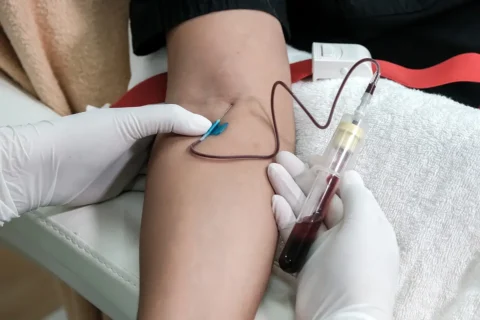Which GLP-1 Receptor Agonist Is Best for You?
Mounjaro: A Potent Weight-Reducing Weapon
Mounjaro and Saxenda are weight loss medications helping tackle obesity and elevated blood sugar in adults with type 2 diabetes. Proper weight management and glycemic control are essential tactics for those with diabetes.
Mounjaro is an impressive double-barreled medication. It mimics the natural hormone GLP-1, which decreases appetite and raises insulin after eating. But it also imitates GIP, another hormone that assists regulating blood glucose and facilitates utilizing surplus energy.
Clinical research shows Mounjaro results in substantially more weight loss and lower blood sugar readings than Saxenda. At the highest Mounjaro dose, volunteers lost up to 21% of their body weight, far surpassing Saxenda’s 6.4% mean reduction. Moreover, fewer people stopped Mounjaro due to side effects.
This once-weekly injection starts at 5 mg, ramping up based on patient response. Common side effects are gastrointestinal, like nausea and diarrhea, but usually mild to moderate. Mounjaro should not be used in those with thyroid tumors, pancreatitis or type 1 diabetes.
Dosage and Administration
Mounjaro is administered as a once-weekly injection under the skin. The starting dosage is 5 mg and can be increased based on the patient’s response and weight loss goals.
Before increasing the dose, it’s recommended to remain on the initial dose for at least four weeks to allow the body to adjust and reduce the likelihood of side effects.
The dosing schedule typically follows this pattern:
- 5 mg for 4 weeks
- Then 10 mg for 4 weeks
- And 15 mg thereafter
However, some patients may benefit from lower doses depending on side effect tolerance and weight loss progress. The maximum recommended dose is 15 mg once weekly.
For best results, Mounjaro should be used along with a reduced-calorie meal plan and increased physical activity. Patients should be monitored closely by their healthcare provider when using this medication.
Side Effects and Safety Considerations
Overall, Mounjaro is well-tolerated by most patients. Common side effects include nausea, diarrhea, vomiting, constipation and headache. These are usually mild and improve over time as the body adjusts.
However, some individuals may experience more severe or persistent side effects that require a dose reduction or discontinuing the medication. It’s important to report any concerning symptoms or issues right away to the prescriber.
Mounjaro is contraindicated for those with personal or family history of medullary thyroid carcinoma, multiple endocrine neoplasia syndrome type 2, gallbladder disease, diabetic retinopathy and pancreatitis. Patients with type 1 diabetes should not use this medication.
Saxenda: A Well-Established GLP-1 Receptor Agonist Medication

Mechanism of action
Like Mounjaro, Saxenda mimics the actions of the GLP-1 hormone to suppress appetite, lower glucose levels after meals, and promote fullness. This helps enable weight loss and improve blood sugar control.
Weight loss and blood sugar control effectiveness
While Saxenda has been shown to effectively promote weight loss and regulate blood glucose, head-to-head trials demonstrate that Mounjaro provides significantly greater benefits in these areas. On average, Saxenda recipients experienced about 6.4% weight loss compared to up to 21% weight loss with Mounjaro.
Dosage and Administration
Once-daily subcutaneous injection using a multi-dose injection pen is required with Saxenda.
Dosing is individualized based on a patient’s response and tolerability. The initial dose is 0.6 mg and then gradually increased up to a maximum of 3.0 mg once daily.
A dose escalation schedule is recommended over several weeks for Saxenda to reduce gastrointestinal side effects as patients adjust. Starting at a lower dose and increasing gradually can improve tolerance.
Side Effects and Safety Considerations
Common side effects with Saxenda include nausea, vomiting, stomach pain, increased heart rate, diarrhea, constipation, headache, dizziness, fatigue.
Contraindications and precautions also apply due to similar safety and risk factors as Mounjaro for patients with allergy to liraglutide, history of medullary thyroid carcinoma, multiple endocrine neoplasia type 2, diabetic ketoacidosis, or significant problems involving the stomach, kidneys, liver, heart, pancreas or gallbladder.
Saxenda has been demonstrated as an effective and well-tolerated option for many years, but Mounjaro offers the potential for significantly greater weight loss and blood sugar control benefits based on clinical trial results thus far.
A Close Comparison: Mounjaro vs Saxenda
While both Mounjaro and Saxenda aim to promote weight loss and improve blood sugar control, there are notable differences in their effectiveness, dosing regimens, and safety profiles.
Effectiveness
Head-to-head clinical trials demonstrate Mounjaro’s clear advantages. Study participants experienced up to 21% average weight loss on Mounjaro compared to only 6.4% weight loss on Saxenda. Mounjaro also resulted in larger reductions in hemoglobin A1C and fasting plasma glucose. However, individual responses will vary.
Dosing
Mounjaro is administered as a weekly subcutaneous injection while Saxenda requires a daily self-injection. The less frequent dosing of Mounjaro may be preferable for some patients.
Safety
Mounjaro appears to have a better safety profile with fewer patients discontinuing treatment due to side effects compared to Saxenda. However, both medications can cause similar gastrointestinal side effects like nausea, vomiting and diarrhea.
Cost and Availability
Mounjaro currently has a higher estimated monthly cost ($1,500) compared to Saxenda ($160). Saxenda has been available longer and has a lower list price. However, cost will vary depending on insurance coverage and copayments.
The Importance of Weight Loss Effectiveness Monitoring
While Mounjaro and other weight loss medications can help jumpstart your journey, long-term success ultimately depends on lifestyle changes, monitoring progress, and making adjustments along the way.
Monitoring your weight loss progress closely while on Mounjaro allows you and your healthcare team to:
Assess effectiveness. Is Mounjaro helping you lose weight at an appropriate rate over time? Or do you require a dose adjustment or other interventions?
Identify issues early. Slow or stagnant weight loss may indicate side effects, poor adherence, need for additional support, or ineffectiveness of the current treatment approach.
Reduce health risks. Unexplained weight gain while on Mounjaro could signal waning effectiveness, development of adverse effects, or noncompliance. Early detection is key.
Optimize results. Ongoing monitoring provides valuable data to help you and your doctor refine your treatment strategy and maximize benefits. Adjustments can be made when needed.
Maintain motivation. Seeing progress and results is a powerful motivator. However, weight loss plateaus can dampen spirits, requiring a change in approach.
Your healthcare team may recommend weekly or bi-weekly weight checks in the beginning, transitioning to monthly checks after an initial period. They will likely advise self-weighing at home at the same time each day for most accurate data.
Beyond weight, your doctor will monitor your waist circumference, body mass index (BMI), lab markers, blood pressure, and symptoms to determine if Mounjaro is adequately controlling your condition. If not, they may recommend adjusting your dose, adding another medication, or considering an alternative approach.
Conclusion

While both Mounjaro and Saxenda are effective options for improving weight loss and diabetes outcomes, Mounjaro has shown significantly greater effectiveness – though at a higher cost.
The less frequent dosing of Mounjaro may be preferable for some, while the daily dosing of Saxenda requires closer adherence.
Individual responses, safety profiles, and cost/insurance considerations will vary and should be discussed with your healthcare team when choosing between these two medications. In the end, whatever treatment option helps you achieve your weight loss and health goals is the right choice for you.






